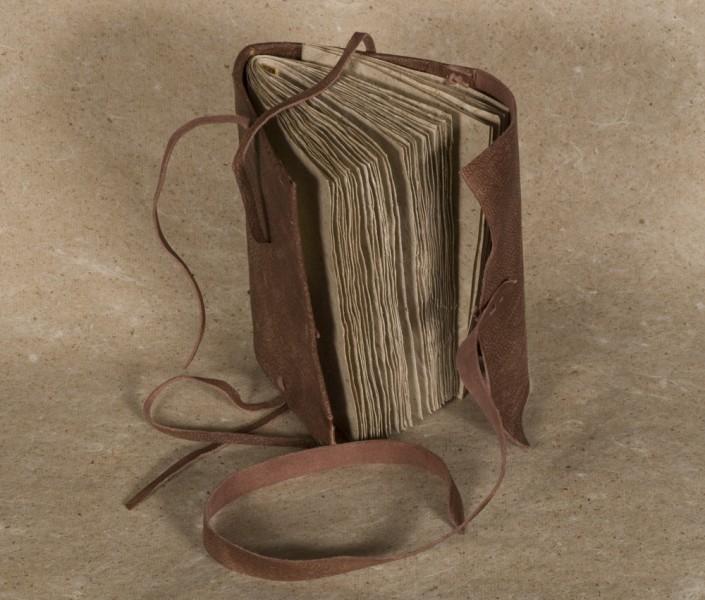i taught a class on the nag hammadi codexes, as part of a series on historic books that jenny craig and i offered for several years, through the seattle center for book arts.
in the class we covered the history of the find, the content of the books and the construction of the structure.
the nag hammadi codexes were found in upper egypt in 1945 and consist of 13 books, with some 52 texts. they are some of the oldest codex style bindings extant.
It took 30 years for the full dramatic story of their discovery by muhammad ‘ali and consequent dispersal to emerge. the full details i won’t go into here, however it soon became clear that what muhammad ‘ali discovered at nag hammadi were coptic translations, made about 1,500 years ago, of still more ancient manuscripts. the originals themselves had been written in greek, the language of the new testament (coptic is a later stage of the ancient egyptian language written using the greek alphabet).
examination of the datable papyrus used to thicken the leather bindings, and of the coptic script, place them c. a.d. 350-400; but scholars sharply disagree about the dating of the original texts.
the excitement about the content of these books is that they precede and contradict many of the beliefs stated in the old testament. They reveal early christianity to be a much richer and varied tradition then previously thought.
the texts vary in size but tend to be around 5″x7″, made of goatskin, include a leather spine stiffener, papyrus pages, leather ties to secure the book, pages are secured by tacketing, and the coves are created with cartonage, or layers of papyrus that have been veneered together.





